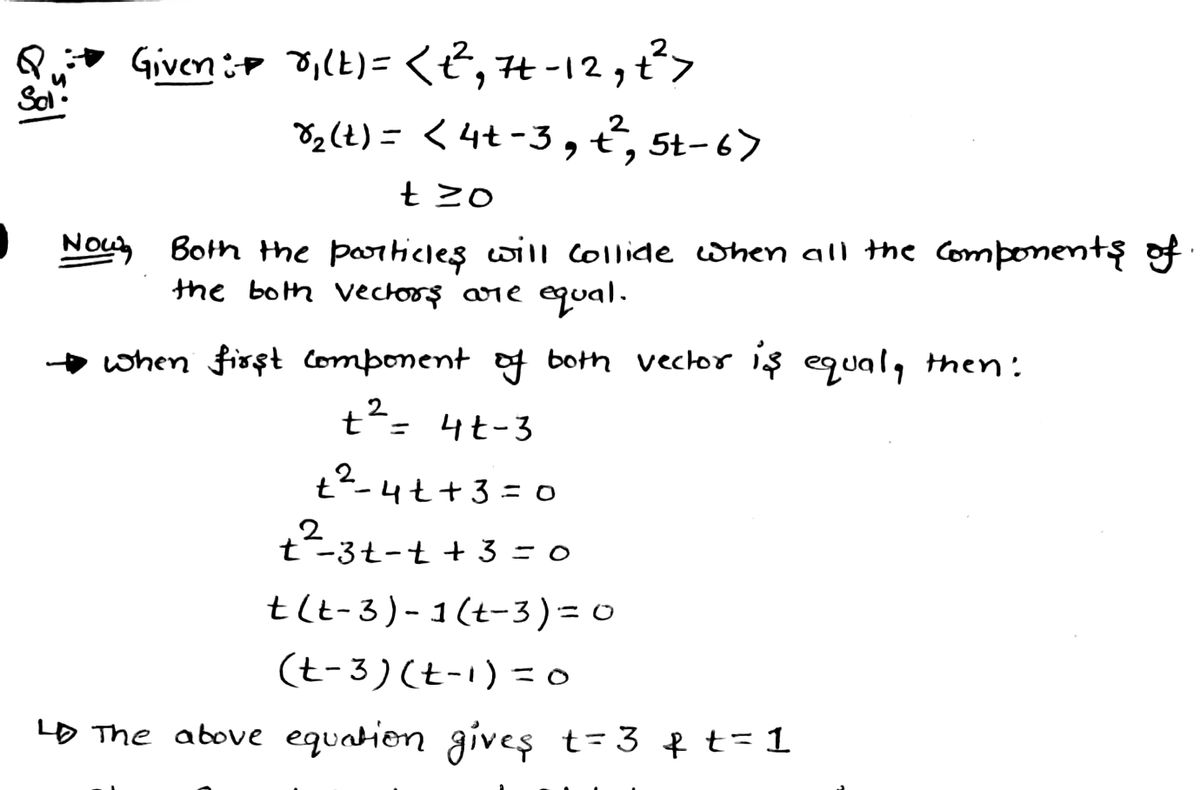49. If two objects travel through space along two different curves, it's often important to know whether they will col- lide. (Will a missile hit its moving target? Will two aircraft collide?) The curves might intersect, but we need to know whether the objects are in the same position at the same time. Suppose the trajectories of two particles are given by the vector functions 150 r₁(t) = (t², 7t for t≥ 0. Do the particles - 12, t²) r₂(t) = (4t-3, t², 5t - 6) collide?
49. If two objects travel through space along two different curves, it's often important to know whether they will col- lide. (Will a missile hit its moving target? Will two aircraft collide?) The curves might intersect, but we need to know whether the objects are in the same position at the same time. Suppose the trajectories of two particles are given by the vector functions 150 r₁(t) = (t², 7t for t≥ 0. Do the particles - 12, t²) r₂(t) = (4t-3, t², 5t - 6) collide?
Algebra & Trigonometry with Analytic Geometry
13th Edition
ISBN:9781133382119
Author:Swokowski
Publisher:Swokowski
Chapter11: Topics From Analytic Geometry
Section11.2: Ellipses
Problem 31E
Related questions
Question
49

Transcribed Image Text:Then find para
equations and a computer to graph the curve.
48. Try to sketch by hand the curve of intersection of the
parabolic cylinder y = x² and the top half of the ellipsoid
x² + 4y² + 4z² = 16. Then find parametric equations for
this curve and use these equations and a computer to graph
the curve.
49. If two objects travel through space along two different
curves, it's often important to know whether they will col-
lide. (Will a missile hit its moving target? Will two aircraft
collide?) The curves might intersect, but we need to know
whether the objects are in the same position at the same
time. Suppose the trajectories of two particles are given by
the vector functions
r₁(t) = (t², 7t - 12, t²)
for t≥ 0. Do the particles collide?
50. Two particles travel along the space curves
r₂(t) = (4t-3, t², 5t - 6)
10
r₂(t) = (1 + 2t, 1 + 6t, 1 + 14t)
r₁(t) = (t, t², t³)
Do the particles collide? Do their paths intersect?
13.2 Derivatives and Integrals of Vector Fun-
Later in this chapter we are
Expert Solution
Step 1

Trending now
This is a popular solution!
Step by step
Solved in 2 steps with 2 images

Recommended textbooks for you

Algebra & Trigonometry with Analytic Geometry
Algebra
ISBN:
9781133382119
Author:
Swokowski
Publisher:
Cengage

Trigonometry (MindTap Course List)
Trigonometry
ISBN:
9781337278461
Author:
Ron Larson
Publisher:
Cengage Learning

Algebra and Trigonometry (MindTap Course List)
Algebra
ISBN:
9781305071742
Author:
James Stewart, Lothar Redlin, Saleem Watson
Publisher:
Cengage Learning

Algebra & Trigonometry with Analytic Geometry
Algebra
ISBN:
9781133382119
Author:
Swokowski
Publisher:
Cengage

Trigonometry (MindTap Course List)
Trigonometry
ISBN:
9781337278461
Author:
Ron Larson
Publisher:
Cengage Learning

Algebra and Trigonometry (MindTap Course List)
Algebra
ISBN:
9781305071742
Author:
James Stewart, Lothar Redlin, Saleem Watson
Publisher:
Cengage Learning